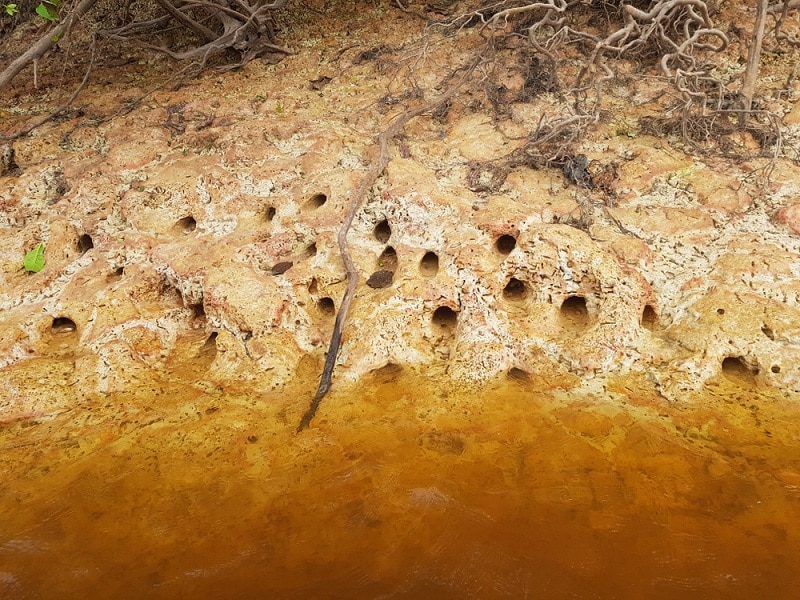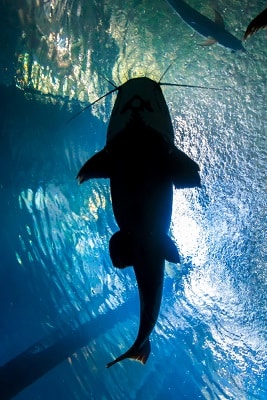
Catfish Hole
Catfish holes are something that every angler knows about or should. They are a necessity for successful noodling as well. These holes are the sweet spot for fishermen. Read on to learn why.
Catfish Dig Holes
Catfish do not merely find holes and burrow into them. Catfish often dig their own holes, and they do so for a variety of reasons.
Laying Eggs
When a female is ready to lay her eggs, she will dig a hole for the eggs so that they are safe. This is necessary for survival. She knows that if she were to lay her eggs in the open they would more than likely be eaten by other fish. After the female finds the perfect spot for her eggs, she will lay them in the hole. The male fish will then remain by the hole to protect his eggs until they hatch.
Avoid the Heat
Catfish holes are also the result of a fish simply wanting a dark, cool environment. This is a common reason that catfish burrow down into the sandy bottom of a lake during the hotter months. These fish do not care for the blistering heat of the sun and appreciate being able to cool off.
Predator Reasons
Burrowing into a hole makes finding prey easier, especially if the water is clear enough for the catfish to see. They can hide their bodies underneath the sand in their hole while barely poking their heads out. This lets them see potential prey before it can see them, giving them the ultimate advantage in underwater battles.
Safe Sleeping
In addition to using their hidey-hole to have an advantage over prey, many catfish will also sleep in their perfectly dug hole. When they are covered by the sand, other fish cannot see them. This protects them from predators during their most vulnerable moments.
Finding Holes
Finding a catfish hole greatly increases your chances of catching a fish. Because fish are in the holes, all a person has to do is dangle the bait by the hole to get a bite. Most fishermen use a type of sonar to discover catfish holes. If the bottom is made of sand, simply look for a dip at the bottom. If there is more land on the other side of the dip, there is a great chance that this is a catfish hole.
There are sonar devices available for fishermen that are using a boat as well as those that are casting their pole from the shore. Practicing with these devices will make you a professional at finding catfish holes so that you can use them to your advantage.
Finding catfish holes is a necessity for successful noodling. Noodling involves a fisherman finding a catfish hole and reaching inside. This can be dangerous, and often requires a spotter for safety reasons, but most noodlers are able to reach inside a hole and bring home an impressive catfish. It is important to learn how to properly noodle before attempting this method of catfishing.
Related Video:
